The Arkadi Monastery, located 22 km from Rethymnon town in Crete, is a site of great historical and cultural significance.
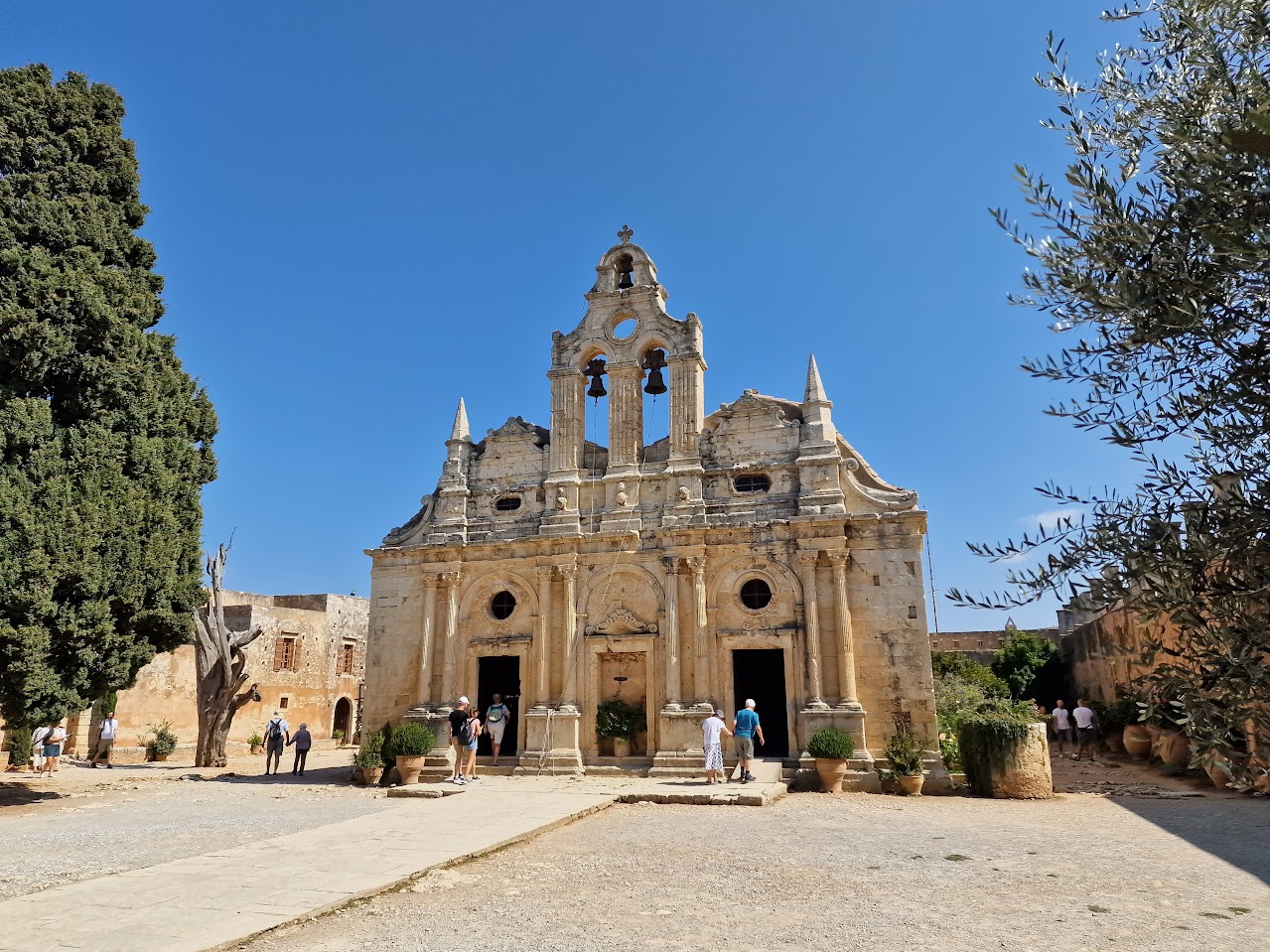
How To Get To The Monastery Of Arkadi
Founded in the 16th century, the Arkadi Monastery (Moni Arkadhi in Greek) is set amidst the scenic hills and gorges of the Amari Valley close by to Rethymnon. You can find it on Google maps here.
Regular day trips run from Rethymnon to Arkadi monastery, and you'll see them advertised in the town. On top of that private tours, and specialist tours to the Monastery along with other stops are available. I've even noticed that you can now rent e-bikes in Rethymnon and cycle there!
When I last visited in October of 2023, I drove there in my own car as I wanted to see some other places like ancient Eleftherna along with Arkadi Monastery.
There's plenty of parking outside the grounds, making it nice and easy. Oh, and there's also a taverna near the car park if you want to eat or have a drink when visiting.
If you want to rent a car in Rethymnon I recommend: Discover Cars
Entrance To The Monastery At Arkadi
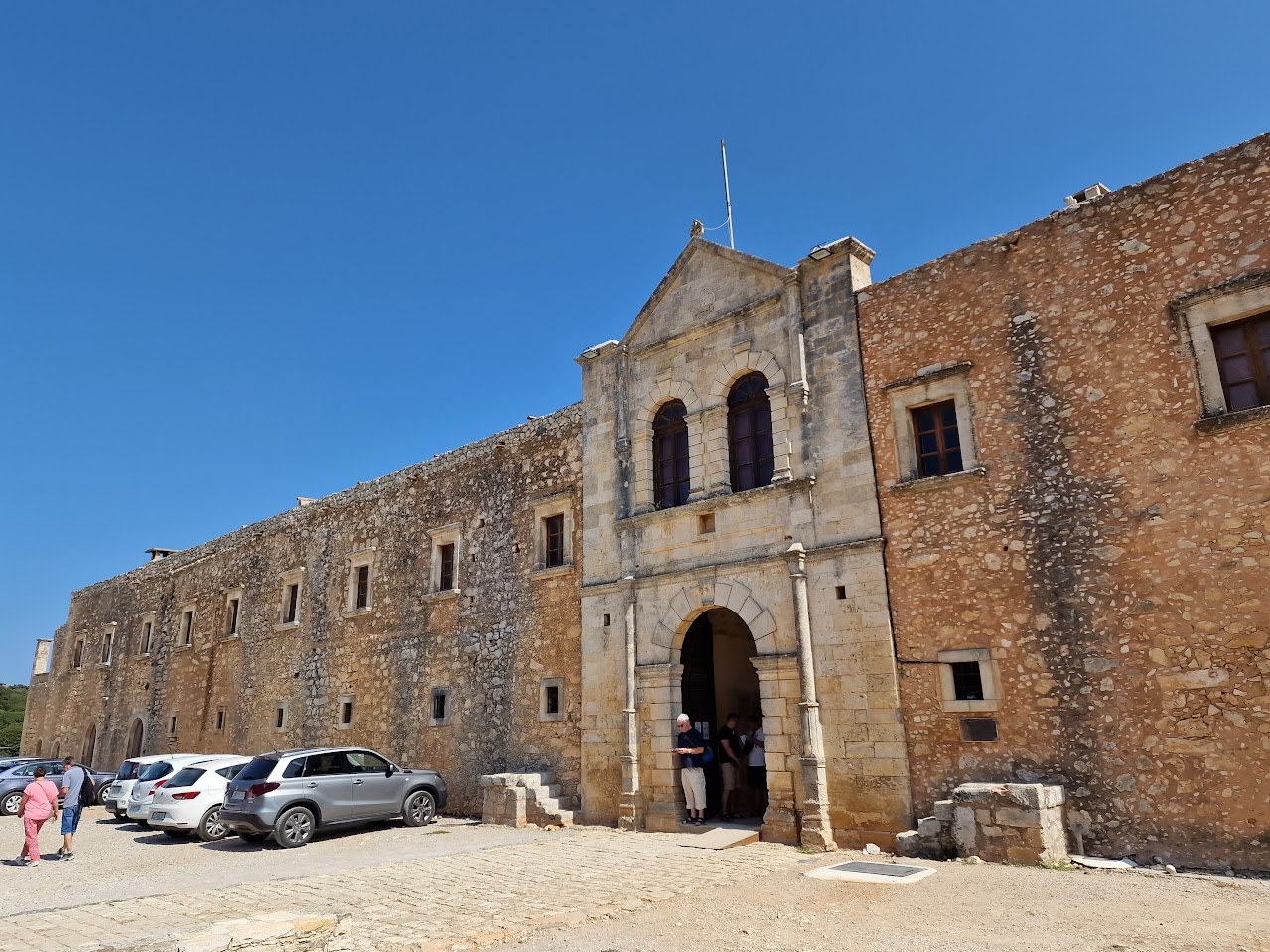
The entrance fee for the monastery is 4 Euros, but I want to tell you a little secret. Entrance is free for Greeks (as it is considered they would be there for pilgrimage as opposed to sightseeing).
As Vanessa is Greek, I let her do the talking, and we both get in for free. Doesn't sound fair does it, at least that's what the French lady thought behind us in the queue. Welcome to Greece!
What there is to see at the Arkadi Monastery
Everything you see when walking around the grounds is deeply connected with the role the monastery played in the various Cretan uprisings and revolts under Ottoman occupation.
In addition, it is a working monastery, although the monks keep a low profile. I didn't see any when I visited – probably too many tourists around like me for them!
I've included a brief history of Arkadi Monastery further down in the article to give it some context. And, when you walk around the monastery, you'll find informative signing which gives a history of the place.
Here though is a little of what to expect as you walk through the archway of the entrance.
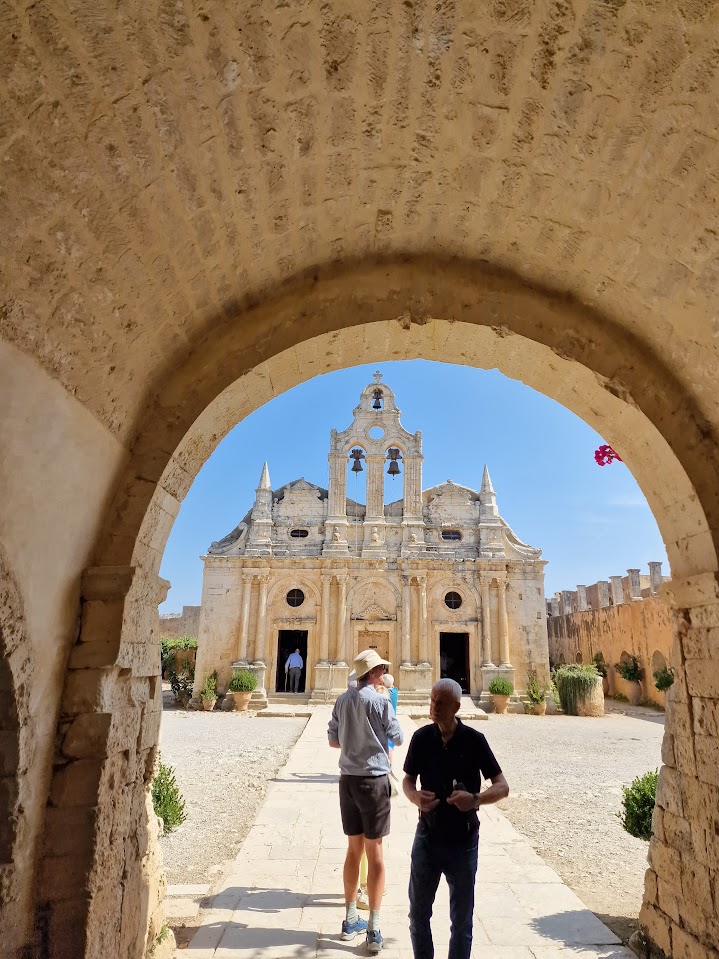
Katholikon (Main Church)
Directly in front of you as you walk through the entranceway is the main church, or Katholikon. You can immediately tell it looks more like a Venetian church.
It's baroque architecture seems almost out of place for an Orthodox church in Greece. It's certainly not the usual way that Greek Orthodox churches look!
In a way, it set the feel for the entire monastery. It made me think we were in Morocco or a desert area because of the colors and also the tree (which we will get to in a minute).
You can of course go inside the church.
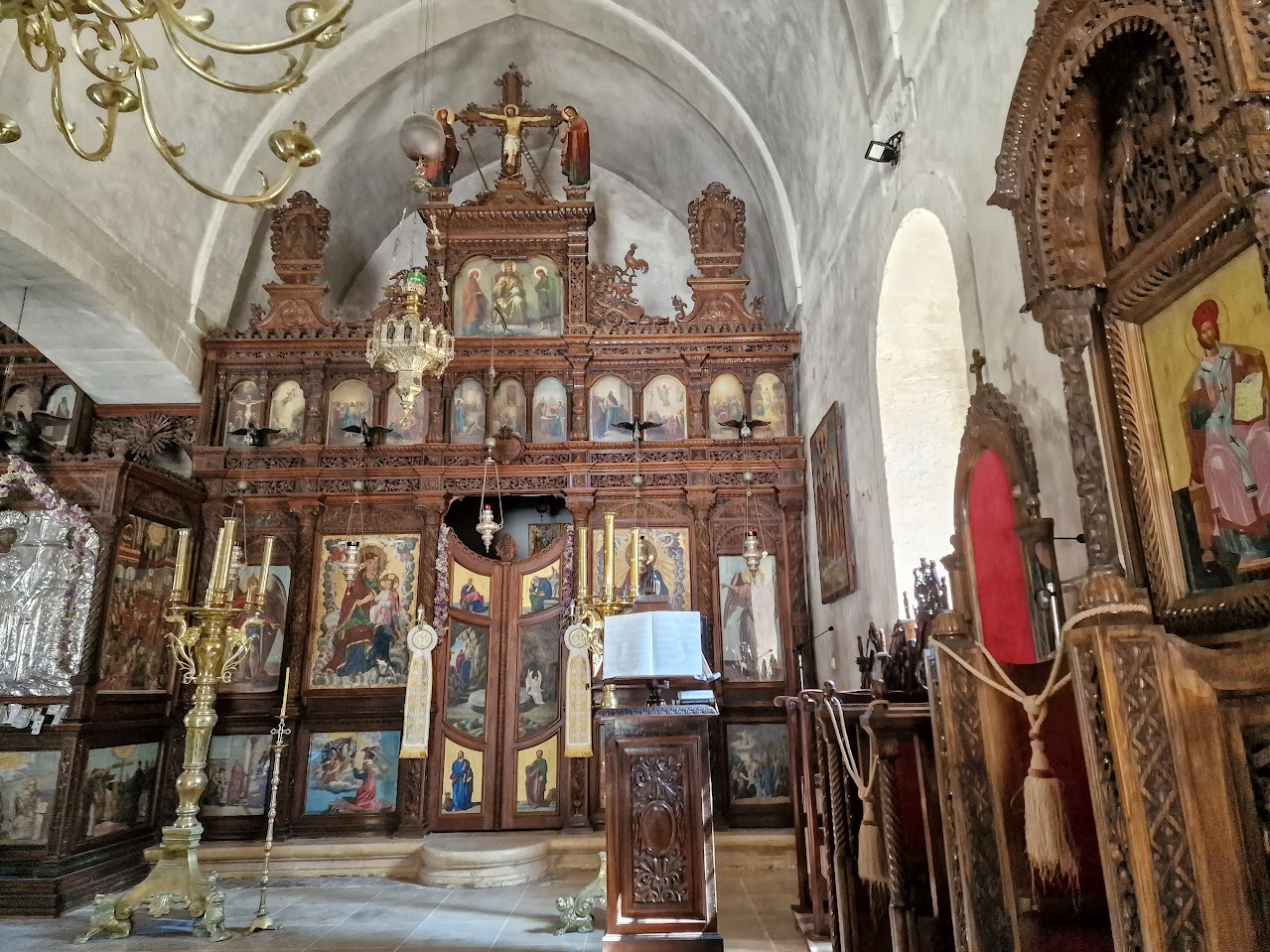
It seems that every church in Greece has something slightly unusual about it, and in this one, it was the icon pictured below.
![]()
Arkadi Tree
As you exit the church, look over to your right and you will see the famous bullet tree of Arkadi.
This ancient Cypress tree still contains bullet holes from the battle I'll talk about later. There's a white arrow pointing to where you can still see remains of ammunition.
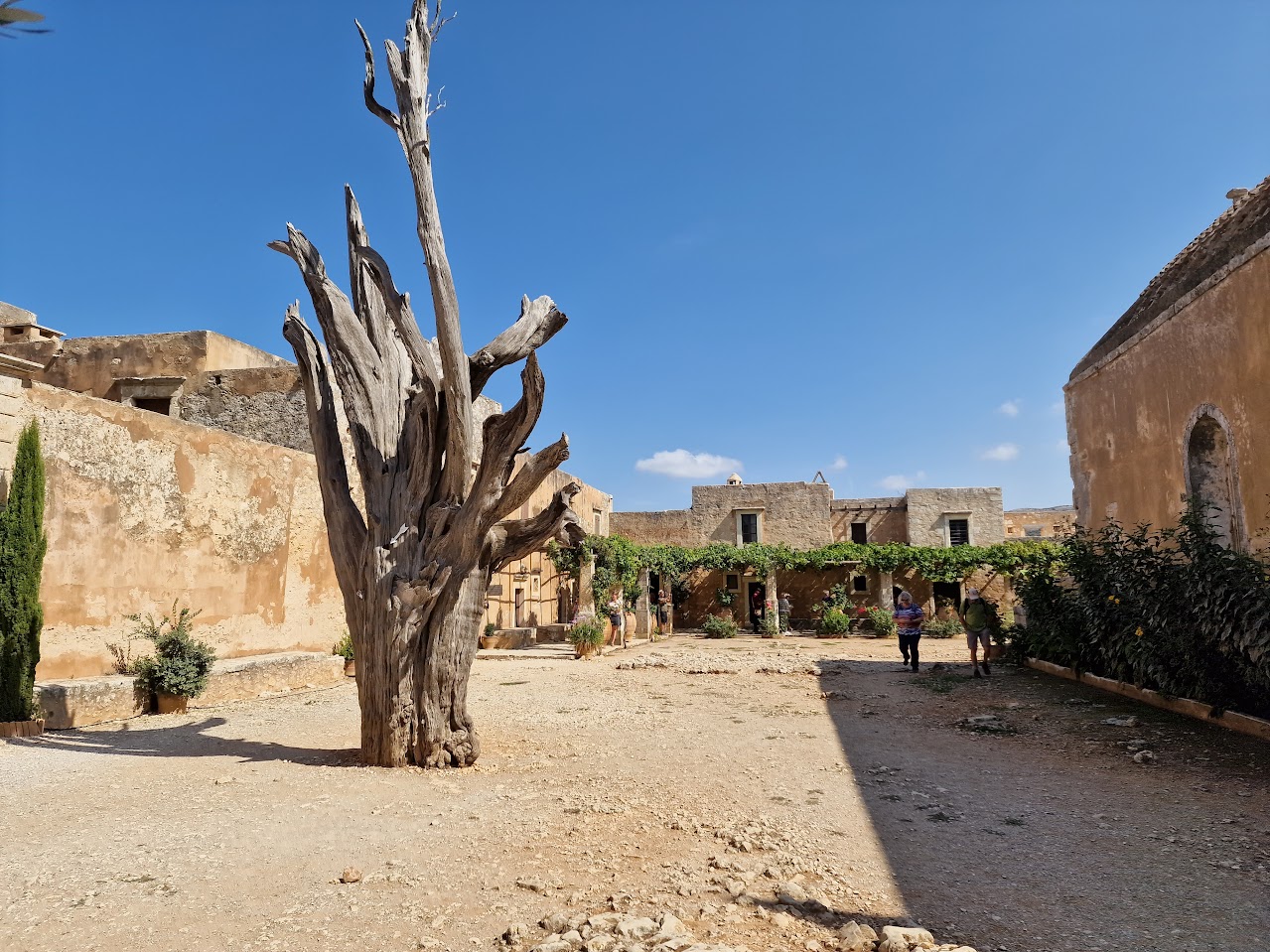
The tree of Arkadi is a poignant reminder of the Cretan uprising, and the importance Arkadi played in it.
Refectory, Cells and Museum
Once you have been inside the church and seen the tree, you will notice that you are inside a contained courtyard. This is because the entire monastery is surrounded by a wall.
On the inside of this wall are various buildings, so you should go in to check them all out. Some of the old buildings include monk cells, a wine cellar, and a dining hall with a door which still shows sword marks!
From the outside, things are not super-clearly indicated as to what they are, so you should just go in any open door and up any stairs you see! Some areas are blocked off for the monks, so obviously don't go there.
You'll learn a lot about the history of the monastery and its past. You can also read about it now if you want.
History Of Arakadi Monastery
The Arkadi Monastery has been operational since at least the 16th century, although the exact date it was founded is not known.
Up until the 16th century, the Arkadi Monastery functioned as an idiorrhythmic institution, meaning each monk had his own personal living space, possessions, and managed his own daily life. The monastery complex was smaller than it is today, with the church consisting of just one main hall.
Historical records indicate that in the 16th century, the monastery was owned by the Kallergis family. By 1572, under Matthaios Kallergis and Abbot Klimis Chortatzis, it transitioned to a communal living setup and underwent significant renovation.
Arkadi Monastery emerged as a well-organized community recognized for its scholarly activities, becoming a prominent monastery in Crete. It boasted a sizeable library, a writing room, a gold embroidery workshop for making vestments, and had a leather-making facility. Additionally, it had extensive lands for producing a large quantity of wine and olive oil.
Arakidi And The Ottoman occupation
Following the Ottoman capture of Rethymnon in 1646, Arkadi was able to retain some of its rights, such as the use of church bells, which is reflected in its alternative name ‘Canlı Manastır', meaning ‘Monastery of the Bells'.
The majority of the buildings that exist today were constructed in the early Ottoman period, between 1650 and 1715, under the guidance of abbots Gerasimos Vlastos and Neofytos Drossas. This indicates that the monastery was held in high esteem during that period.
The monastery was looted multiple times by the Ottomans during Cretan revolts. A key event in its history occurred on November 8, 1866.
Cretan Revolt 1866
The Cretan Uprising of 1866 was sparked by the oppressive Ottoman policies towards the Cretans, with the goal of reuniting the island with Greece. Arkadi Monastery was at the forefront of these events, hosting the Revolutionary Committee of Rethymnon due to its strategic location and the influential presence of its Abbot, Gabriel Marinakis. Despite Ottoman demands for the Committee to vacate the monastery, Abbot Gabriel stood firm in refusal.
In October of 1866, Mustafa Pasha, the Ottoman Governor-General of Crete, set out to confront the Cretan rebels assembled at Arkadi. With a force of around 15,000, he advanced towards Arkadi, where roughly 1,000 villagers—predominantly women, children, and the elderly—sought refuge. The monastery's defense was led by about 300 combatants, under the leadership of Second Lieutenant Ioannis Dimakopoulos and Abbot Gabriel.
Arkadi Siege
The Ottoman troops arrived at the monastery on November 8, demanding surrender, but the insurgents' response was resolute refusal, leading to an outbreak of combat. The Cretan fighters managed to deal significant damage to the Ottoman forces leading to numerous Turkish deaths. Despite their numerical superiority, they were unable to capture the monastery.
During the ensuing night, the Turkish soldiers introduced a large cannon, known as the ‘bombarda', positioning it inside the Stables across from the main entrance to the monastery. Faced with this escalation, Abbot Gabriel and the Committee dispatched messengers to Amari and Mylopotamos for assistance.
The following day, November 9th, saw intensified combat. The Ottomans breached the monastery's main gate with the new weapon, leading to intense close-quarter battles. The conflict reached its peak in the powder room. There the remaining defenders and people inside, mainly women and children, chose death over surrender by causing an explosion.
Survivors later recounted the harrowing events as the Ottoman forces continued their assault, which ended in pillage and the execution of some of the fighters, including Ioannis Dimakopoulos.
By the way, in a building near the car park and outside of the monastery walls, you can see the skulls of the victims of the explosion.
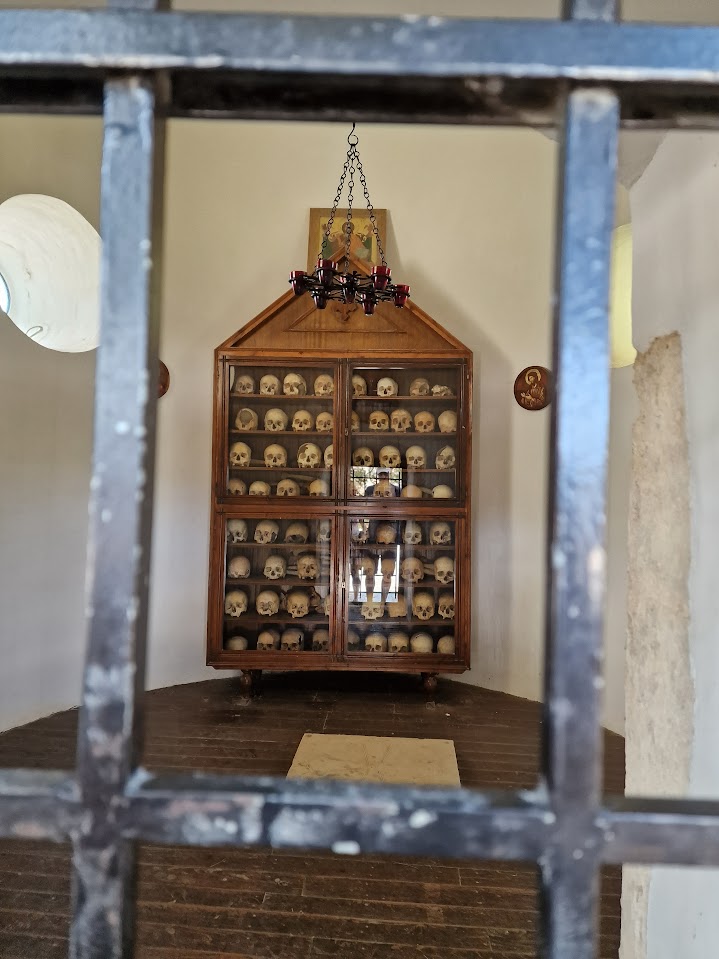
Aftermath
The Arkadi tragedy made a deep impact. While the Ottomans initially celebrated the event, they didn't manage to completely dominate the Christian population of Crete. Faced with international pressure, they implemented the ‘Organic Law' on February 3, 1868, which was akin to a constitution bestowing certain rights to the Christians and granting the island a degree of self-governance.
The selfless act of the Arkadi defenders echoed internationally. Renowned figures of the era, like Giuseppe Garibaldi and Victor Hugo, expressed their support for the Cretan cause, inspiring foreign volunteers to join the uprising.
The global emotional reaction to the Arkadi incident played a key role over the next few decades in resolving the ‘Cretan Question'. Finally, in December 1913, in line with the desires of the Cretan populace, the island officially became a part Greece after centuries of struggle.
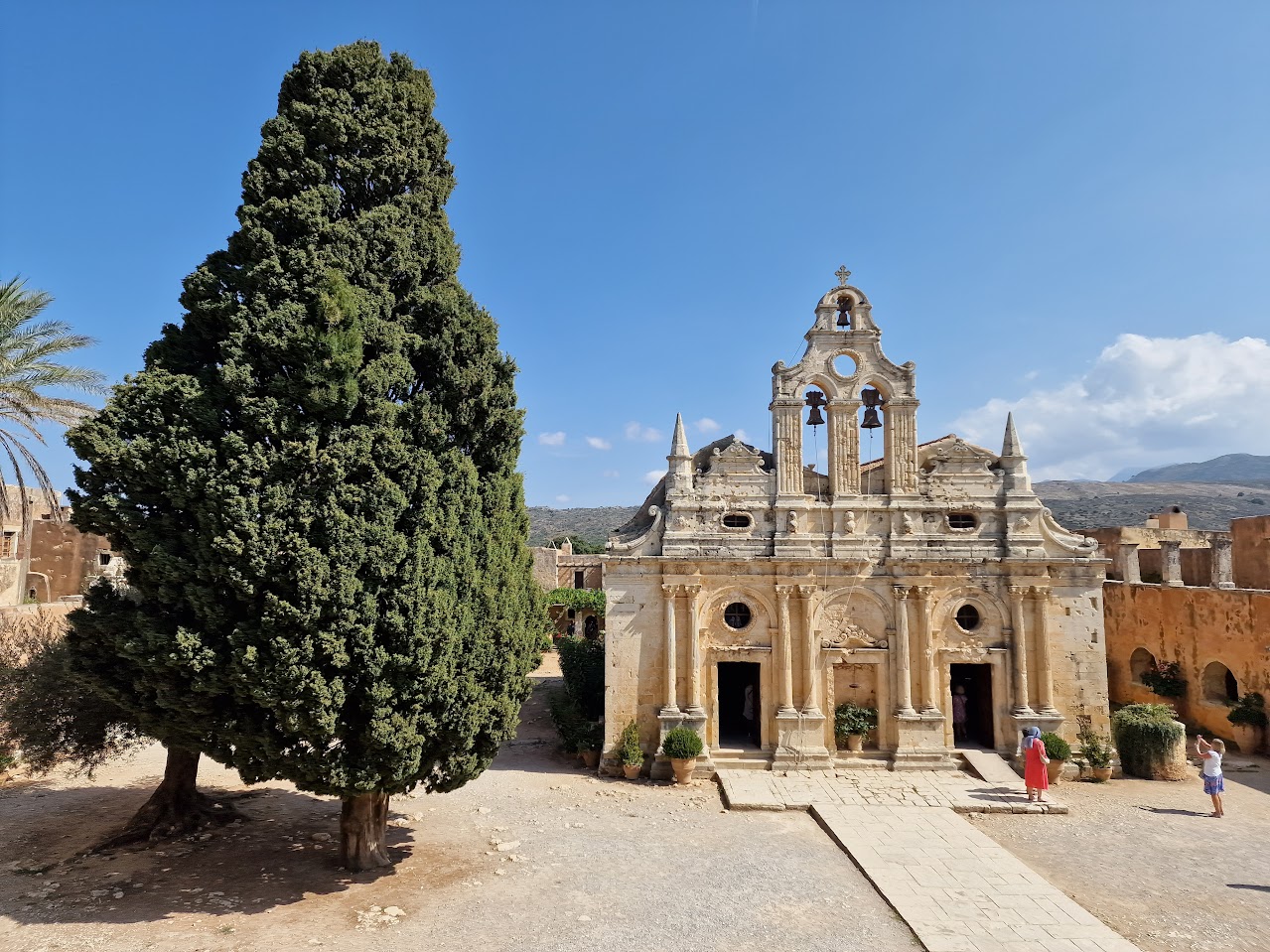
FAQs About Visiting the Sacred Monastery of Arkadi
Readers who are on vacation in Crete and considering adding a stop to the monastery at Arkadi often as questions similar to:
Is Arkadi Monastery worth visiting?
Arkadi Monastery is definitely worth going to as it is a significant historical site in Crete, offering a deep insight into Cretan history and culture. Its poignant history, stunning architecture, and scenic surroundings make it a must-visit whether on a day trip from Rethymnon or as a road trip in Crete.
What is the dress code for Arkadi monastery?
Visitors should dress modestly when visiting Arkadi Monastery or other Greek Orthodox Monasteries. This typically means covering shoulders and knees. It's advisable to wear long pants or skirts and avoid sleeveless tops to respect the religious and cultural significance of the site.
What is the history of the Arkadi monastery?
The Arkadi Holy Monastery dates back to the 16th century and is renowned for its role in the 1866 Cretan resistance against Turkish rule. The tragic self-sacrifice of its refugees during the siege in defiance of Ottoman rule made it a symbol of Cretan struggle and freedom.
Why go to the Arkadi Monastery?
The monastery's importance extends beyond its historical significance. It is a testament to the enduring spirit of the Cretan people and their contribution to the broader narrative of freedom and resistance. Its story resonates with visitors from all over the world, making it a must-visit location for anyone interested in history, culture, and the enduring human spirit.
You might also want to read:
 – Dave Briggs
– Dave BriggsDave is a travel writer from the UK who's been living in and writing about Greece since 2015. As well as writing this guide to the monastery at Arkadi, he's also written hundreds more travel blog posts about other destinations in Crete and the rest of Greece. Follow Dave on social media for more Greece travel ideas: